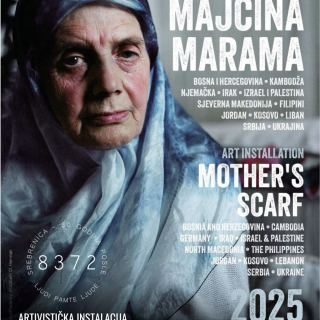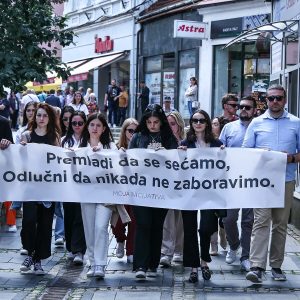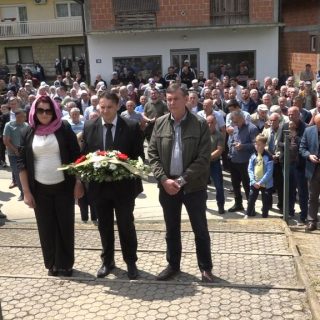The conflict between the Army of the Republic of Bosnia and Herzegovina and the Croatian Defence Council (HVO) resulted in a new and even bloodier period of war in Bosnia and Herzegovina. New front lines, mostly in Herzegovina and Central Bosnia, appeared, followed by new concentration camps, ethnic cleansing and new war crimes against civilians and prisoners of war on both warring sides. The two most notorious sites of suffering, where people were killed or imprisoned during this conflict, are certainly Ahmići near Vitez, a site of crimes against Bosniaks, and Trusina near Konjic, a site of crimes against Croats. Both war crimes happened on the same day, with an insignificant time difference.
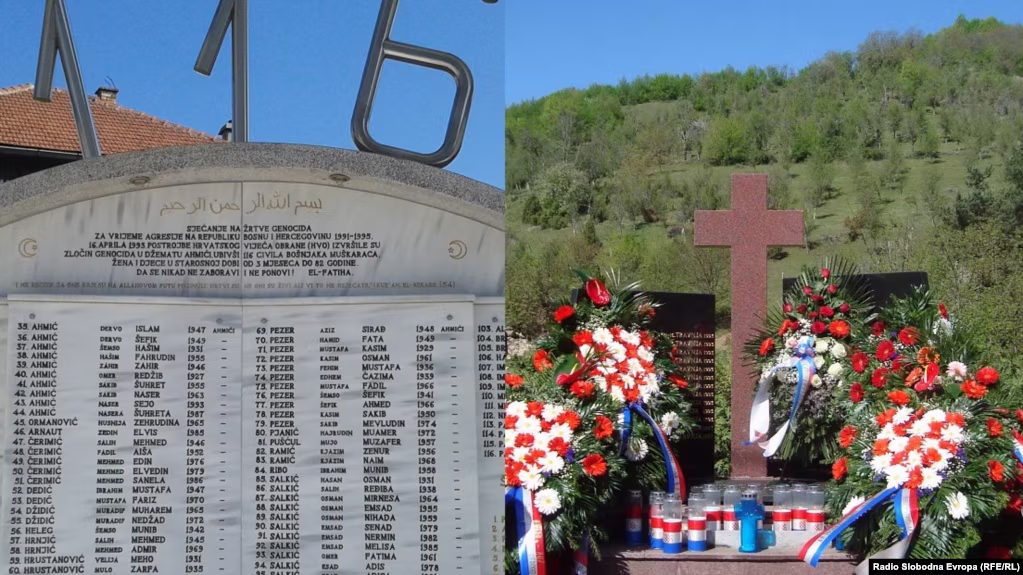
The 4th battalion of the HVO military police and unit ”Jokers” started an attack against Ahmići in the early hours of April 16, 1993. During this attack, 116 persons were killed, out of which 32 women and 11 children. The village was set on fire soon after that and razed to the ground. UN soldiers reached Ahmići only on April 22. Their cameras captured the level of destruction in Ahmići, and soon everyone in Bosnia and Herzegovina and globally learned about it. Dario Kordić was sentenced to a 25-year prison sentence for this crime. However, he was released in 2014. Drago Josipović was sentenced to 12 years and Vladimir Šantić to 18 years in prison. In addition to this, Zoran, Mirjan and Vlatko Kupreškić were sentenced to prison sentences ranging from six to ten years. However, they were found not guilty in a final verdict in 2001.
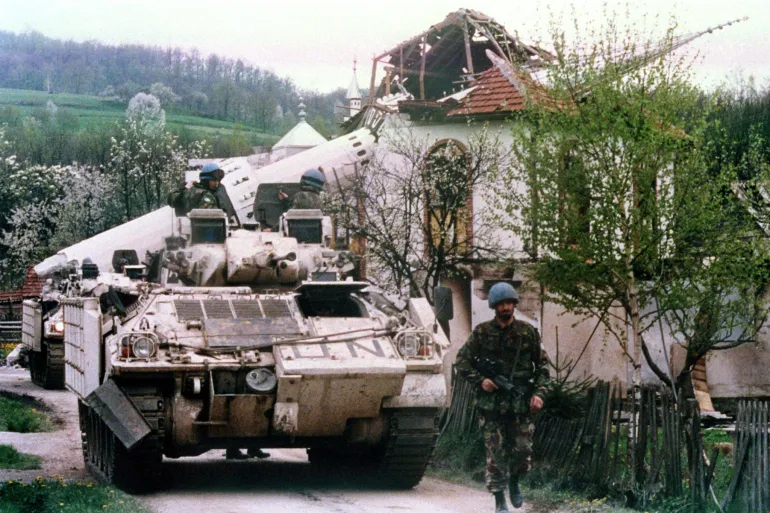
While all of this was happening in Ahmići, a similar scenario was taking place in Trusina, where members of the Army of the Republic of Bosnia and Herzegovina, i.e. soldiers of a special unit called ”Zulfikar”, killed 22 persons, out of which 18 civilians and four prisoners of war who were members of HVO. They were killed after they had surrendered, which makes this war crime even more serious. Edin Džeko was sentenced to 13 years in a final verdict, just as Rasema Handanović, who was sentenced to 5.5 years in prison following a guilty plea, whereas Nihad Bojadžić was sentenced to 15 years in prison for other crimes committed in Trusina. Nedžad Hodžić was sentenced to 12 years in prison and Mensur Memić to 10 years in prison.
Just as in case of any other site of suffering in Bosnia and Herzegovina, the situation in Trusina and Ahmići is no different when it comes to marking of these massacres.
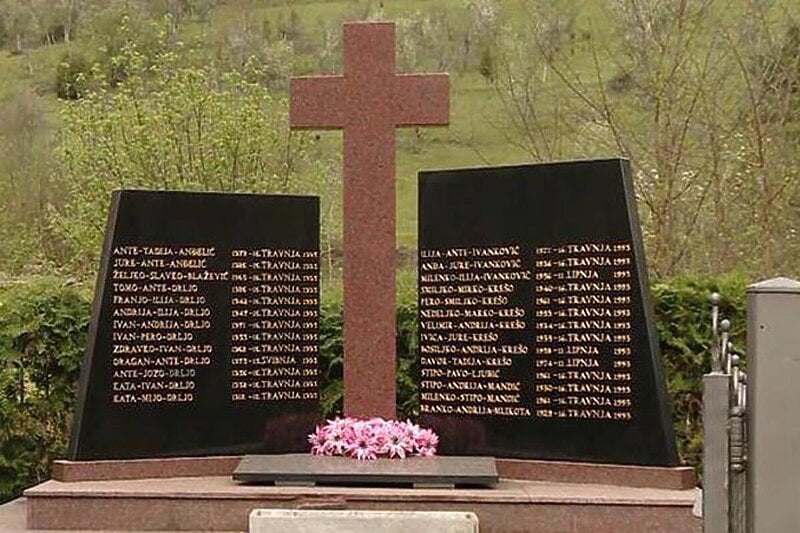
They are characterised by the dominance of the ethno-political elites that see such events as an opportunity to achieve their political agenda, so that it has become common for them to come to sites of suffering with great fanfare and disappear as soon as an event is over. In other words, those who are continuously blathering about coexistence, reconciliation and endangered position of their people are actually the ones who have done nothing during their past terms of office to improve any of these segments that matter for the society in Bosnia and Herzegovina.
On the other hand, the issue of reconciliation and accurate and honest marking of sites of suffering in Bosnia and Herzegovina is resting on the shoulders of the civil society. One of the organisations that has been marking the sites of suffering of all victims of the last war in Bosnia and Herzegovina is the Centre for Non-Violent Action. They worked on different projects and their primary goal is the introduction of a culture of remembrance as a social norm that is absolutely essential for any post-conflict society in order to achieve the necessary cohesion and harmony.
One of important segments of this organisation is related to peace building trainings that gather persons of all ages from all countries of the former Yugoslavia. On their official website, they describe their trainings as follows:
”Particular importance is attached to networking and communication between persons from different parts of the country, while supporting processes of breaking down prejudice, building mutual trust and constructive facing the past. Through this peace education programme, CNA strives to achieve a model of active citizens who are willing, able and aware of their power and strength to impact the society in which they live, and who feel particularly responsible for the society and social processes.”
Trainings are especially intended for young persons. Many of them learned for the first time about terms such as culture of remembrance and social justice thanks to CNA. They also had a chance to meet their peers who face different mental narratives.
Another, by no means less important, project implemented by CNA involves marking of sites of suffering. This action is done in a way opposite to the one used by the ethno-nationalist elites in Bosnia and Herzegovina.
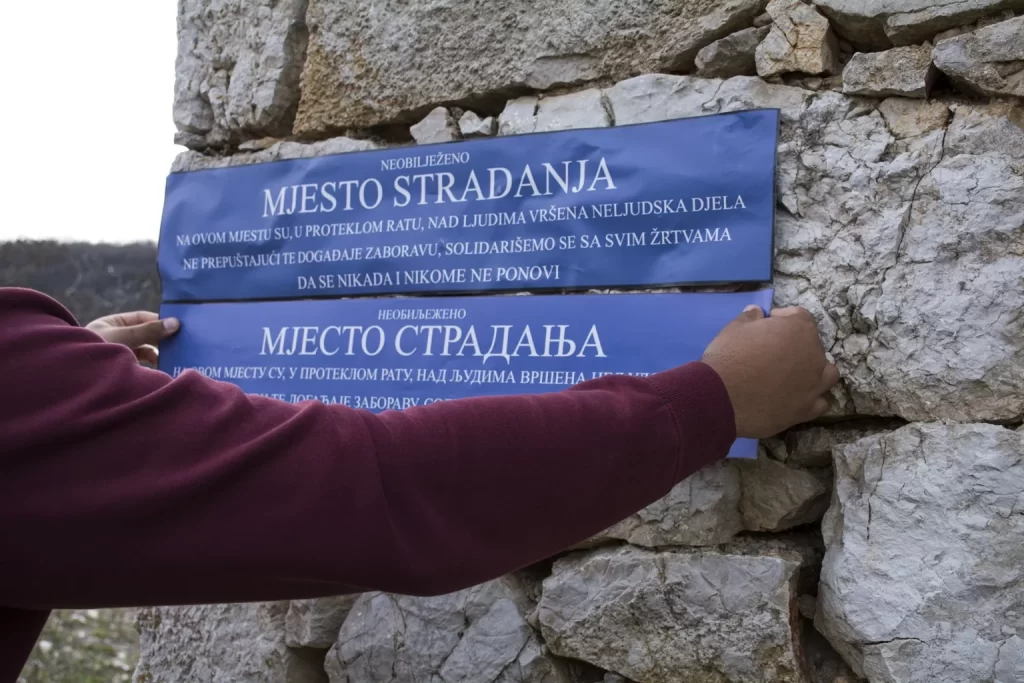
This is just one of numerous examples of marking sites of suffering:
”On Igman plateau, we marked the former Hotel Mrazište next to the forest management building, which has been destroyed. During the war it had been the seat and command centre of the special unit of the Army of the Republic of Bosnia and Herzegovina called ”Zulfikar”. The unit ”Zulfikar” used these premises to detain Serbs and Croats from Sarajevo and Konjic that had been brought from other detention camps, such as Musala in Konjic, and to question them, subject them to forced labour and abuse.”
The Centre for Non-Violent Communication shows only one of the ways what the reconciliation process should look like. It should start at a micro level and proceed towards higher social segments that should be involved in the initiated process of reconciliation and culture of remembrance.
Another positive example also includes civil society organisations from Croatia, such as Documenta and Youth Initiative for Human Rights of Croatia that commemorate such events in different ways every year, including also anniversaries of crimes committed in Ahmići and Trusina.[1] By visiting monuments, talking to families of victims and carrying out activities to raise awareness in the Croatian society, they are conveying a message of what relations between peoples and countries can look like, if they are based on court-established facts and human empathy as a primary value.
Bosnia and Herzegovina as a society is obliged to focus on the culture of remembrance, memorialisation of all innocent victims and the essential social dialogue in order to ensure the foundation for building a new Bosnia and Herzegovina. There is simply no alternative to this!
This text was written in cooperation with Tačno.net.
[1] https://www.yihr.hr/hr/obiljezili-smo-31-godisnjicu-ratnog-zlocina-u-ahmicima
